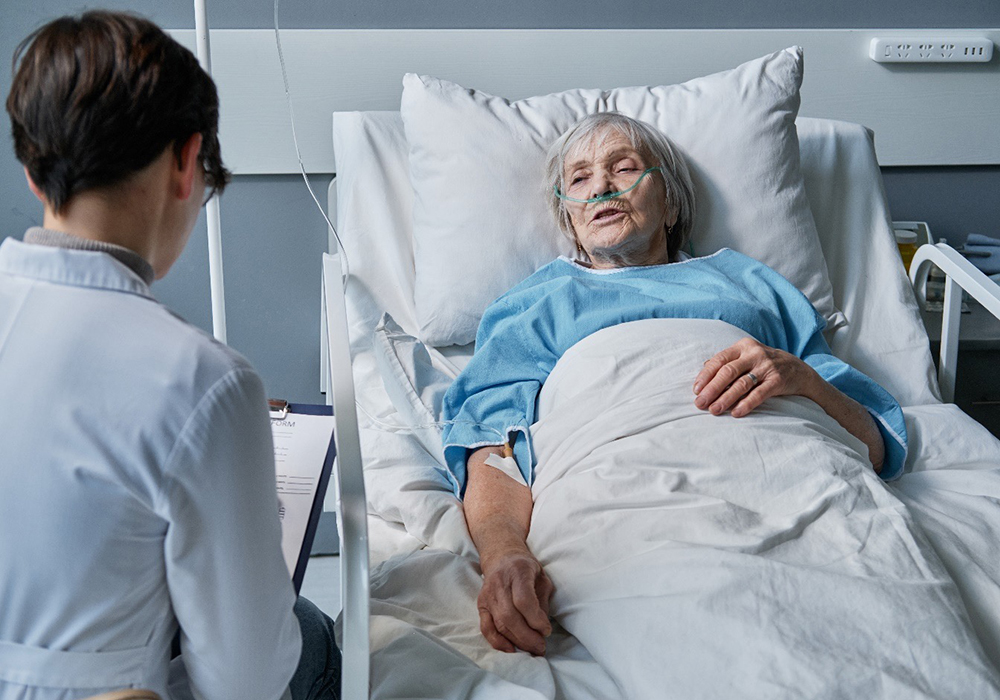An “acute state of confusion resulting from organic brain dysfunction,” delirium is a medical emergency that can be highly distressing to both patients and caregivers. Approximately 2.6 million older adults experience delirium each year.
Early identification and management lead to the best outcomes, but delirium is often underdiagnosed because of challenges such as lack of clinician training, environmental distractions (e.g., little privacy, heavy patient load), use of vague or alternative terms (e.g., confusion), and lack of perceived importance.
Missed diagnoses can extend a hospital stay by 10 days on average, and episodes of delirium can increase the risk of complications, falls, patient and staff distress, restraint use, postacute placement, and costs. In fact, delirium contributes an estimated $38–$152 billion annually to the national healthcare financial burden. Poor outcomes, such as an increased risk of morbidity and mortality, are strongly linked to delirium duration and severity, older age, and frailty.
Risk Factors
Common risk factors include increased age, advanced disease, baseline cognitive impairment, frailty, comorbidities (e.g., renal failure), psychiatric illness, alcohol or illicit drug use, poor nutrition, and a history of delirium.
Several factors may induce delirium, including medications, infection, dehydration, brain metastases, paraneoplastic syndromes, poor sleep, immobility, pain, invasive devices, and metabolic abnormalities. Loneliness, lack of communication with family members, and unfamiliar environments such as hospital rooms, are often-overlooked contributors.
Presentation
Delirium can look different for each patient, making identification difficult. However, two distinct features exist: sudden onset and fluctuation in sensorium. It can last from a few days or weeks to even months.
A delirium diagnosis can fall under one of three subtypes:
- Hyperactive: Manifests as restlessness, hypervigilance, hallucinations, delusions, and discomfort or agitation.
- Hypoactive: Manifests as withdrawal, lack of movement, lack of orientation, flat affect, and limited engagement with others or the external environment. Hypoactive delirium is the most common subtype, but it is often mistaken for depression and associated with poorer outcomes.
- Mixed: Exhibits both hyperactive and hypoactive characteristics.
Prevention and Early Identification
Delirium prevention strategies include maintaining environmental orientation (e.g., ensure patient has glasses or hearing aids, encouraging family visits), giving prompt attention to bathroom needs, maintaining typical diet, ensuring daily mobilization, and reducing nocturnal disturbances.
In a 2022 study, researchers reported that routine screening and early intervention reduced patients’ length of hospital stays by 2.27 days and decreased falls from 23.4% to 17%. Nurses have a critical role in routine screening and early identification of delirium. Validated tools, such as the Single Question in Delirium (SQiD) and the Ultra Brief Confusion Assessment Method (UB-CAM), can aid in screening.
SQiD asks caregivers a single question (i.e., “Do you feel that [patient’s name] has been more confused lately?”) that, if affirmative, kicks off a sequence of delirium detection tools to confirm a diagnosis. It has benefit for hospitalized patients with cancer, and including caregivers in patient mentation assessments emphasizes the importance of continual monitoring and reporting.
The UB-CAM is a two-step tool available as a free app with an 89% overall accuracy rate. Researchers studied nursing assistants, nurses, and providers’ use of the tool in hospitalized older adults. All users reported that it made screening easy to implementation without large adjustments to workflows.
Nursing Management
Once delirium is diagnosed, nurses should focus on safety and minimizing stress. The use of haloperidol and risperidone is inferior compared to nonpharmacological management, such as discontinuing unnecessary procedures and interruptions, minimizing disruptive stimuli (e.g., bright lights), and supporting a calm demeanor by ensuring a familiar face is near. Family members can help decrease agitation but need guidance on the best method and reassurance that their efforts will decrease the patient’s stress and promote recovery.






